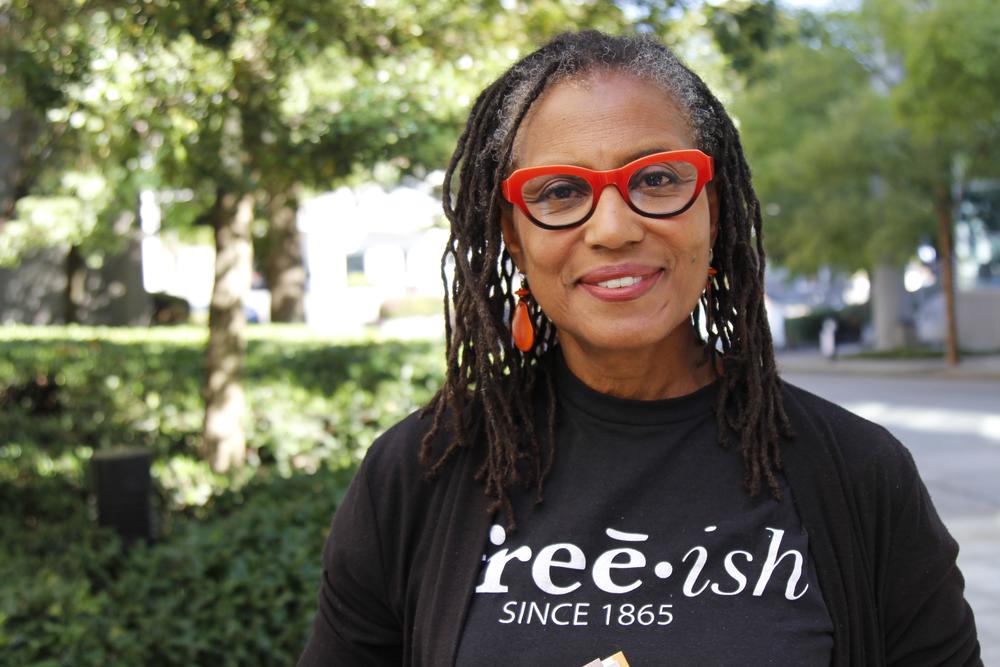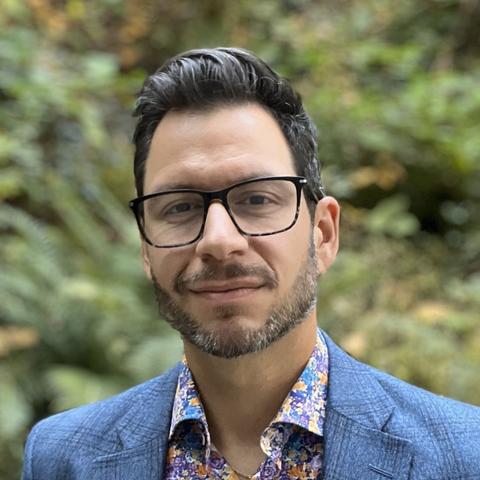
Section Branding
Header Content
A carved peach seed links generations in Georgia-native Anita Gail Jones' debut novel
Primary Content
LISTEN: Imagine you loved someone 50 years ago but life went on. Then, when you’re almost 70 years old, that person suddenly returns. That’s what happens to Fletcher Dukes in Anita Gail Jones’ debut novel. GPB's Peter Biello speaks with Anita Gail Jones about her debut novel, "The Peach Seed."

Imagine you loved someone 50 years ago. This someone turned down your marriage proposal and left town seemingly forever. Life went on. You started a family, became a grandparent. And then, when you’re almost 70 years old, that person suddenly returns. That’s what happens to Fletcher Dukes in Anita Gail Jones’ debut novel. Among the things that connect this couple is a monkey carved from a peach seed. GPB’s Peter Biello spoke with Jones, a native of Albany, Ga., about The Peach Seed.
Peter Biello: This book is kind of one of those classic "stranger comes to town" stories, even though she's not really a stranger, right? Altovise, years later, comes back to Albany and the peace that has settled into this family, the Dukes family, is kind of disrupted to some extent.
Anita Gail Jones: That's right.
Peter Biello: I can imagine being in Fletcher's position, right? The one that got away is suddenly back in town. And he was at that time a widower. And he's got to think about that. So how did you get into his perspective in a such an emotionally charged situation?
Anita Gail Jones: Hmm. It's the story that a lot of people gravitate to, that's — for a long time, my main pitch for the book — I, I centered it around that, that piece about Altovise being away for 50 years and then she comes back and people say, "oh, did they get back together?" It's like, "Oh, no, no, you got to read the books." So but I just really walked a mile in his shoes and just tried to imagine, "What if?"
Peter Biello: So tell us about the origins of this novel, The Peach Seed. Was it the little peach seed monkey that inspired the story?
Anita Gail Jones: No, actually, it was a question for my dad. When I began the project, he had already passed away — or he was already gone to glory, as we say. But I had a question I wanted to know, how did he — He was born in the — Southwest Georgia in 1921. So he was a part of what was known as the Greatest Generation. But of course, he was not able to benefit from the promises made to that generation because of the color of his skin.
Peter Biello: Mm hmm.
Anita Gail Jones: So I wanted to know how men of his generation, Black men in the South, were able to be leaders in their homes, their churches, their communities, on their jobs — when the government, by way of actual laws and policies and the culture at large, treated them less than human. And since my dad was already gone, I was on my own for an answer. So I turned to the page. I decided to explore it through fiction.
Peter Biello: One of the main characters, Fletcher, he would have been about 20 years younger than your dad.
Anita Gail Jones: Exactly.
Peter Biello: How similar is he to your dad?
Anita Gail Jones: I use my dad as the template for Fletcher. And I thought when I started the project, I thought he would be the same age as my dad. But I quickly changed that when I knew that Fletcher needed to be 18 during the movement, the Albany movement. I wanted to him to be on the — on the cusp of manhood during that time. So I then I had to make him a lot younger. My dad's war was World War II. His war was Vietnam.
Peter Biello: Can you tell us a little bit about what was happening in Albany at the time regarding the civil rights movement?
Anita Gail Jones: Yes. The movement started with the late Charles Sherrod, who was a field secretary in the '60s. He came to Albany to work on voter registration and to work on civil rights. And he never left. He passed away last year and he did a lot of work to register people to vote. And there was a lot of that going on. That was a main focus. And Dr. King came down from Atlanta to help with the, with the movement. And he had a definite plan that, later on, he would identify as being too broad, that it needed to have a narrow, more narrow focus. And this is why the movement went down into history as being a failure. And it was absolutely not a failure, of course. And people on the ground kept working after King left, and they have never stopped working.
Peter Biello: Mm hmm. Well, it seems like this was one of the underreported events in the civil rights movement —
Anita Gail Jones: Definitely.
Peter Biello: Because, I mean, King went a lot of places, right? But it seemed like Albany in particular was a laboratory for greater change in larger cities in the South.
Anita Gail Jones: Great way to put it. That's right. It was a labaratory and a testing ground. And it was — a lot of things were new. You know, people were figuring out how to do this. And a lot of the — a lot of them were young. Young teenagers, older teenagers and college students were the ones really propelling and working in the movement. And I found this part astonishing: that many of them would write the night before a protest. They would write their last will and testament, and they would make sure that their parents knew where their — the, if they had a car, where the key was and who was to get the car. They were planning for their own demise as they went out to protest. And we're talking about 16-, 17-, 18-year-olds. It's amazing.
Peter Biello: In this Albany movement as part of the life story of the two central characters in this book, Fletcher and Altovise, and the peach seed monkey, that little talisman carved from a peach seed: It's central to their relationship. It's also central to what happens later in the novel. I won't give it away here, of course, but this peach seed monkey, Do you have one?
Anita Gail Jones: I do.
Peter Biello: Yeah?
Anita Gail Jones: I don't travel with it. So it's back at home. But when I was maybe 10 — 9 or 10 years old and my sister was close to 13, one of our northern neighbors — northern cousins, pardon me. He carved these beautiful little charms. He gave me one, and he gave my sister Betty one. When I started figuring out what the book would be about and who would be in it, the little monkey just jumped in. He just jumped in and said, "I want to be in this story." And it was up to me, of course, to figure out how to make him fit. So I invented the tradition that the men in the Dukes family carved these little monkeys, and they, they give them to the young boys when they come of age. At 13, they receive their peach seed monkey along with the catchphrase: "This will keep the monkey off your back, because being a man is more than a notion." That was all invented. Didn't have that tradition in my family. We just had the two little monkeys that lived in boxes all their lives. But now they're seeing the light of day and he's been immortalized in the story. And he becomes the thread that just pulls you through the story. The family does not know about their ancestors. The reader gets to know because there's an ancestral story that goes right alongside the current-day story.
Peter Biello: The ancestral stories about Malik, who keeps a peach seed in his pocket. He's from northern Senegal, and you write scenes in which he's abducted and sold into slavery in America. So you get to see in your novel the original trauma, and you also see how history is passed from generation to generation. I was wondering what you were hoping to leave the reader feeling in those sections about Malik.
Anita Gail Jones: I feel that — that fiction has a beautiful opportunity for people to meet someone they might never meet and go right inside that person's head and see what makes them tick. So someone total opposite of Fletcher Dukes gets to — gets to know him, a Black man in the South, and hopefully they will read with an open mind and open heart. And open up to something they had not thought about and not try to limit Black folks to one story. That's always been the — the, the wish of some forces out there is we just have one story. And we have so many stories.

